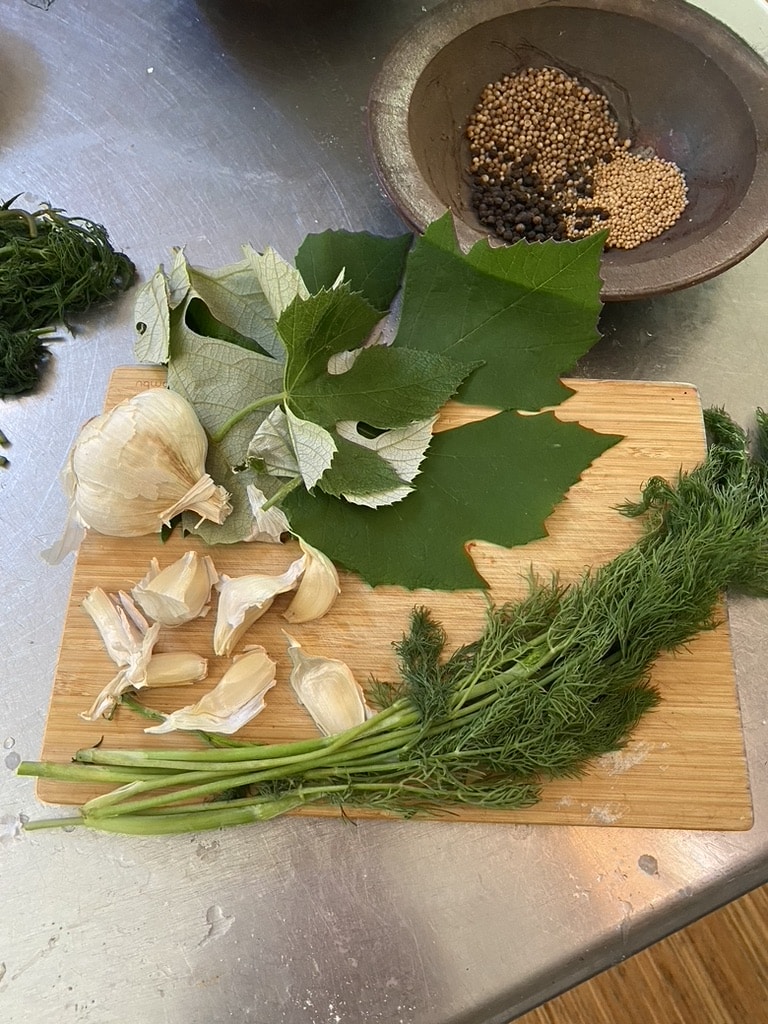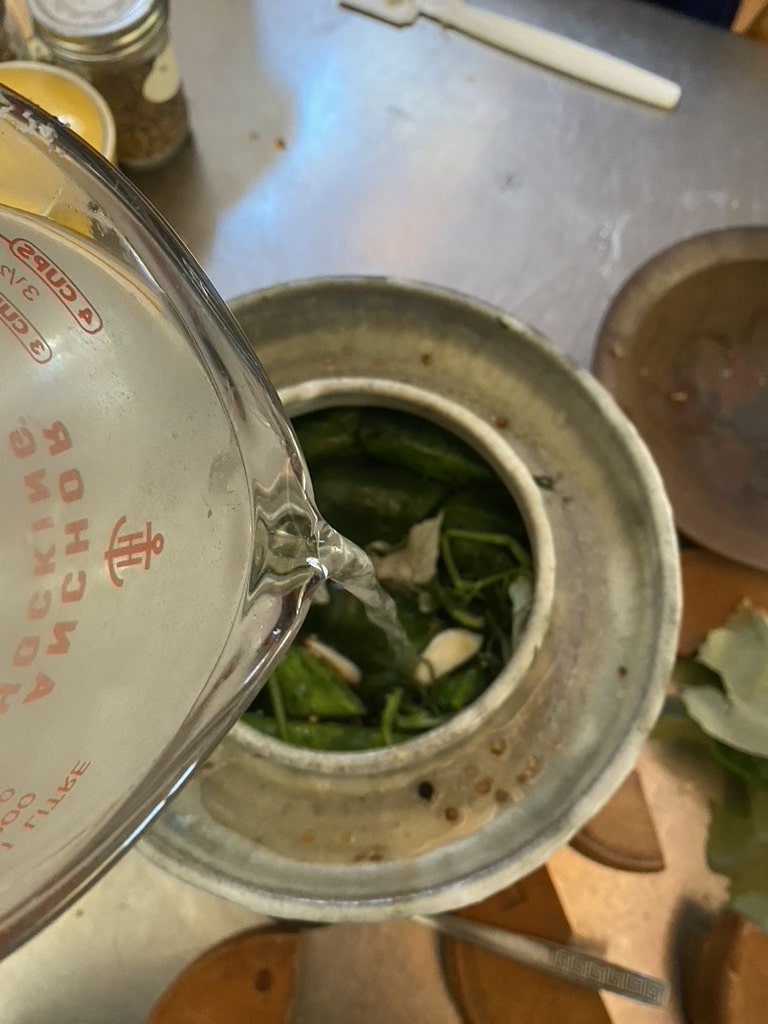Growing up in Israel, I loved roaming the rows of falafel stalls, gazing at the mounds of fermented vegetables, each breathing their tangy freshness onto me, a respite from Summer’s heat. Piles of carrots, cauliflower, turnips, and cucumbers, perfumed by cumin and turmeric were arranged beautifully between fried falafel balls and humus plates. Nothing matches the crisp, fresh tang achieved through fermentation. I’ve had a passion for fermented foods ever since, exploring many variations of fermented vegetables from Mexico to Korea and oodles of places in between, spanning spicy-hot and sour-sweet!
Two quick notes
- This recipe describes fermentation, and NOT pickling, the latter of which is a separate process wherein vegetables are soaked in vinegar.
- Many vegetables can be fermented and will achieve that tangy flavor, so we first emphasize that you should truly explore and experiment. Having said that, vegetables take to the fermentation process better if they’re cut beforehand in ways that accentuate their various physical properties. We’ve included a quick-glance guide that attempts to group vegetables by type, relating to shape and physical qualities, with suggested preparation/cutting guidelines. If you don’t see the vegetable you’re about to ferment on the list, look for a relative or similarly-shaped item on the list and start there!

Fermented Pickled Vegetables
Fermenting vegetables is the most basic recipe for your fermentation vessel (crock), but the options and variations are endless as you allow your imagination to run wild following the whims of your taste buds.
Equipment
- Ceramic Fermenting Crock
- Mixing bowl
Ingredients
Brine
- 1 cup water
- 1 tsp salt
- 3/4 tsp sugar
Vegetables (Your Choice)
- cucumber
- eggplant
- tomatoes
- onions
- zucchini
- green beans
- ocra
- broccoli
- cauliflower
- beets
- carrots
- turnips
- kohlrabi
- melon
Flavoring Ingredients (Your Choice)
- garlic cloves peeled
- dill leaves and flowers
- rosemary sprigs
- thyme springs
- chile dried
- bay leaves
- grape leaves
- allspice
- cilantro seeds
- mustard seeds
Instructions
- Rinse the vegetables
- Peel if needed. Some vegetables with rough skin need to be peeled, such as beets.
- Cut if needed. Use the chart as a guide if you’re not sure.
- Prepare and have ready to use flavoring ingredients such garlic, dill and/or dill flowers, bay leaves, seeds and any other spices you want to try.
- Prepare the brine. In a separate bowl (not the crock) combine water and salt in a ratio of 1 cup water:1tsp salt. I suggest using either sea salt or Kosher salt. Exotic salts may alter the fermentation process. The brine should taste salty but not so salty that you can taste it without discomfort. Add ½-1 tsp of sugar for a hint of sweetness.
- Place a layer of your vegetable into the crock. Refer to the chart above for layering suggestions as this process varies depending on how the vegetable is cut.
- Add your chosen herbs and spices on top of this first layer.
- Add a second layer of vegetables and herbs and spices in turn. Compact the layers as you go. You can add as many layers as you want, as long as you have enough brine to fully cover the layers and have room for the weights.
- Pour the prepared brine into the crock to completely cover the vegetables.
- Press the weights on top of the vegetables and make sure your brine covers the weights.
- Put the crock lid on and add water in the trough of the rim. Wait a week or more to open the crock and taste. I usually ferment for at least a week, but if you feel like having a very raw tangy vegetable, you can open and taste after just a few days. As always make sure to add water in the trough since it evaporates over time.
- For best results, resist the urge to be curious and peek into the crock. Instead, try to leave the lid on to maintain a zero-oxygen environment. Once oxygen is introduced, it could potentially affect the fermentation process.










